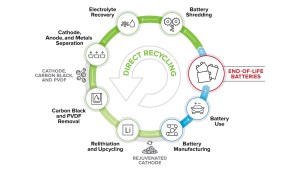Researchers claim to have developed a way to use femtosecond laser pulses to shape the highly precise, ultra-thin mirrors that will be needed for future space telescopes. According to Space Daily, the technique could improve the manufacturing of x-ray telescopes, which capture high-energy cosmic events involved in forming new stars and supermassive black holes.
Femtosecond lasers emit light pulses with durations between a few femtoseconds and hundreds of femtoseconds. This duration is so brief, that light itself would at most be able to travel about the thickness of a sheet of paper in the space of a few hundred femtoseconds.
According to the researchers from MIT’s Kavli Institute for Astrophysics and Space Research, femtosecond laser surface ablation is applied to selectively remove stressed film regions on the mirror substrate, correcting the shape of the mirror’s reflective surface. In other words, the surface is smoothed by burning away imperfections with the laser.
The research team stated, “It is generally harder to fabricate thin mirrors to the exact shape than thicker ones, and the coatings deposited onto mirror surfaces to increase the reflectivity typically have high intrinsic stress that deforms the mirrors further.
“Since the rapid development of femtosecond laser technologies over the last few decades has triggered wide applications in materials processing, we have developed a mirror figure correction and stress compensation method using a femtosecond laser micromachining technique for stress-based surface shaping of thin-shell x-ray optics […] These developments are beneficial to the high-throughput correction of thin-shell mirrors for future space-based x-ray telescopes.”






